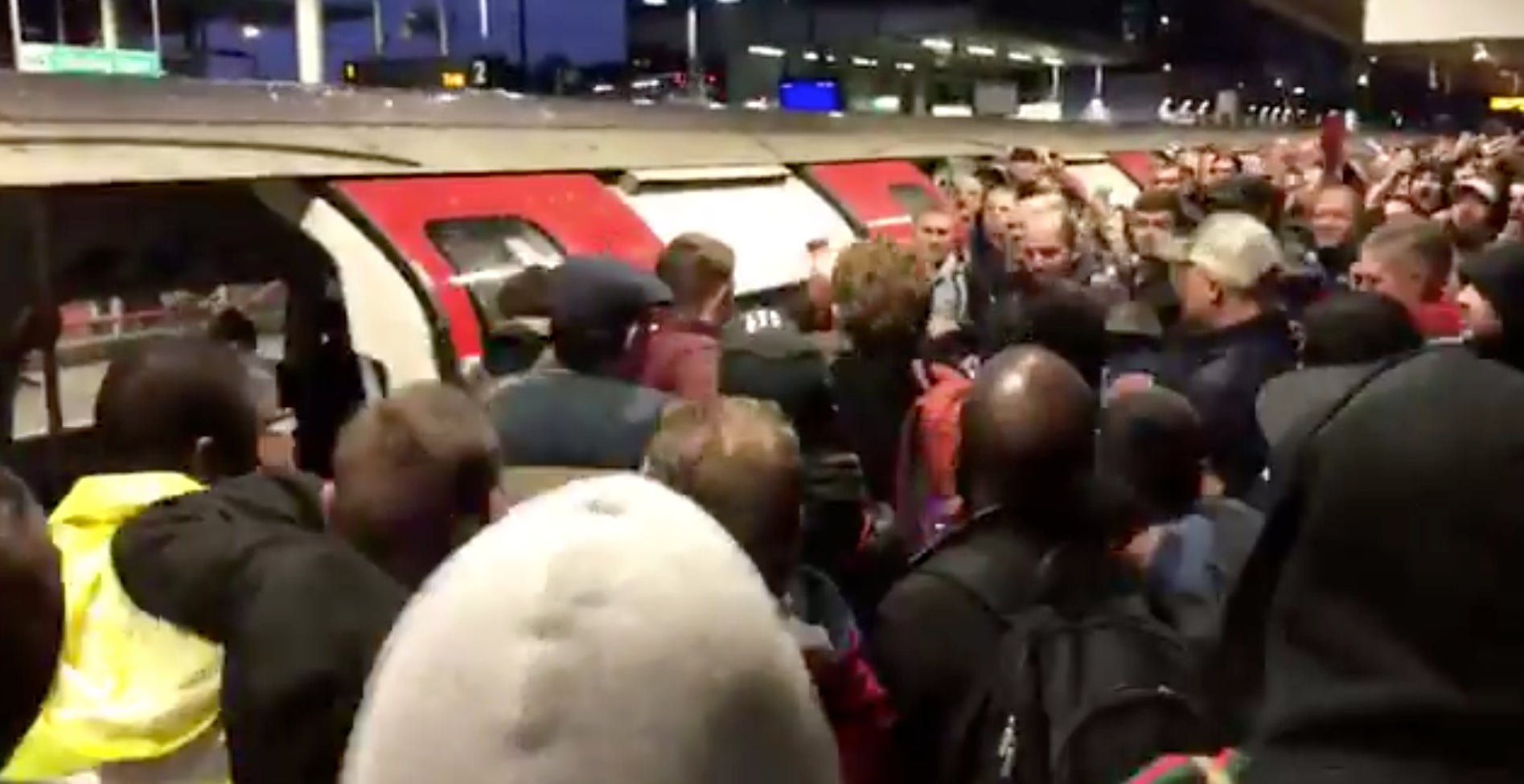Environmental activists in London are violently clashing not with police but with commuters
In more than a year of protest, city-center shutdowns, and a policy of deliberately attempting to get arrested, some of the most violent moments of the Extinction Rebellion movement in London took place this morning when protesters clashed, not with police, but with commuters.


In more than a year of protest, city-center shutdowns, and a policy of deliberately attempting to get arrested, some of the most violent moments of the Extinction Rebellion movement in London took place this morning when protesters clashed, not with police, but with commuters.
In videos posted online from Canning Town, a station on the Docklands Light Railway in east London, angry crowds waiting on the platform seethe, shout, and throw things at two protestors who have climbed on top of a train carriage. A man then jumps from the platform and drags one of the protestors to the ground:
This moment has been coming. Extinction Rebellion, or XR as it is popularly known, has the stated aim of causing maximum impact through non-violent civil disobedience. Many of the actions in the latest wave of “rebellion,” which began on October 7th, have targeted government buildings like the Treasury, which was soaked in fake blood, media organizations, and roads. Last week protestors gathered at London City Airport, climbing onto the building and onto planes themselves, and blockading entrances and lounges.
But so far, disruption to public transport has been minimal. The Tube network carries five million people per day around London, and the system is already stretched. Platforms are narrow and trains often arrive at popular stations so full that it’s impossible for more passengers to board. At rush hour, tensions already run high.
The fact is that, for a large proportion of Londoners, “the commute” is not just frustrating—it’s frightening. The fear may be low level, and often go unnoticed, especially when things run smoothly, but it’s there. The fear, for people in precarious or antagonistic work environments, is that they won’t get to work on time or at all, and be punished for it. They might lose earnings, or even lose their jobs.
Canning Town is in Newham, one of London’s poorest boroughs: It ranks in the bottom four of 32 boroughs by measures of poverty rate, child poverty, low pay, and homelessness, according to analysis by Trust for London, a charity that studies the city. It has the second-highest income inequality in the capital. Long-running debates in the UK focus on precarious contracts and zero-hours work: The fact that people in the lowest-paid jobs have the least protection from dismissal, and can be retained on contract by firms that can cut their paid hours to nothing, without warning. About a million people work mainly on zero-hours contracts, according to the latest figures from the Office for National Statistics, published in 2018.
Extinction Rebellion is a decentralized movement. Some organizers have stood by the decision to disrupt public transport, noting that the point of protest is to be as visible as possible, even if that risks unpopularity. Others have conceded that angering so many potential supporters is an “own goal,” sapping sympathy from a movement that relies on public engagement.
Much of the online discourse about climate protest insists that, at bottom, there is a class divide, with middle-class people having the “luxury” of being able to care about climate change while working class people cannot. This is an oversimplification. Some working class people will support the outcomes XR is fighting for. But our work—which, at base, is directly linked to our ability to survive and feed, house, and cloth our families—is a deeply emotional issue. Some commuters might oppose protesters on moral grounds. But much springs from the fear and consequent anger of people who can’t spend the day working from home, because they’re only paid if they’re in a specific place at a specific time.
In that respect, the anger seen at Canning Town is not an environment issue, nor is it a class issue. It’s an issue of the way we treat our workers. And of that, it’s an indictment.